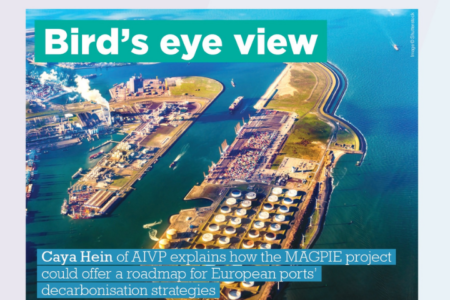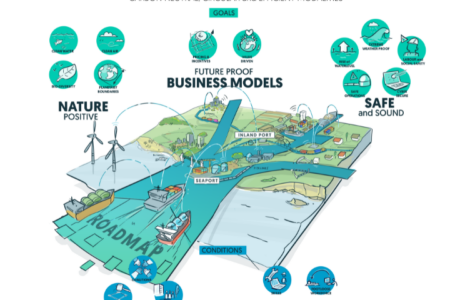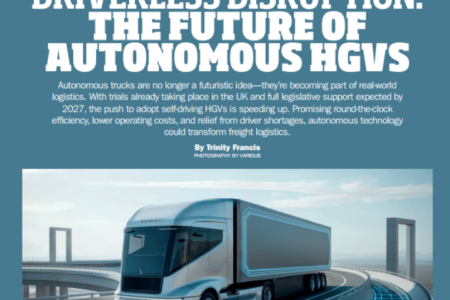On 12 April 2025, Trammo, OCI, and James Fisher Fendercare successfully conducted an ammonia bunkering pilot between two vessels at a terminal in the Port of Rotterdam. This operation was enabled by a pre-study led by TNO, which developed a Qualitative Risk Assessment (QRA) and a risk mitigation plan to ensure safety. The pilot represents an important step in preparing the port for future ammonia-fuelled vessels and is a major milestone for Demonstrator 4 of the MAGPIE project, which has focused on this initiative over the past three years.
Ammonia, a carbon-free fuel, does not emit CO₂ during combustion. The first ammonia-powered ships are expected to enter service in 2026 or 2027. In this pilot, 800 cubic meters of cold liquid ammonia (-33°C) were transferred between two vessels over 2.5 hours, conducted alongside the new quay at Maasvlakte 2’s APM terminal. The demonstration validated both the port’s and MAGPIE’s ammonia bunkering safety frameworks, showing that such operations can be conducted safely and without release into the environment. The pilot was facilitated by the Port of Rotterdam Authority in collaboration with multiple partners.
Rotterdam is the world’s second-largest bunker port, supplying around ten million tonnes of fuel annually. The Port of Rotterdam Authority is working with stakeholders to make low-carbon and carbon-free alternative fuels available for international shipping. Although this pilot used grey ammonia (which has the same chemical properties as clean ammonia), future use of clean (low-carbon) ammonia is expected to play a significant role in maritime decarbonisation. This is made feasible by the existing global infrastructure for ammonia production, storage, transport, and distribution.
To manage fuel innovation, the Port of Rotterdam uses the international Port Readiness Level (PRL) assessment tool. This approach evaluates regulatory, safety, infrastructure, and supply-chain preparedness for new marine fuels. The port has already reached high readiness levels for LNG and methanol. With the ammonia pilot now completed, the port has advanced from PRL 6 to PRL 7, meaning it is ready to conduct ammonia bunkering operations on a project basis.
The procedures and insights gained through this pilot will be shared with the EU, other ports, and relevant industry actors—contributing to wider European readiness and the safe scaling of ammonia as a maritime fuel.


